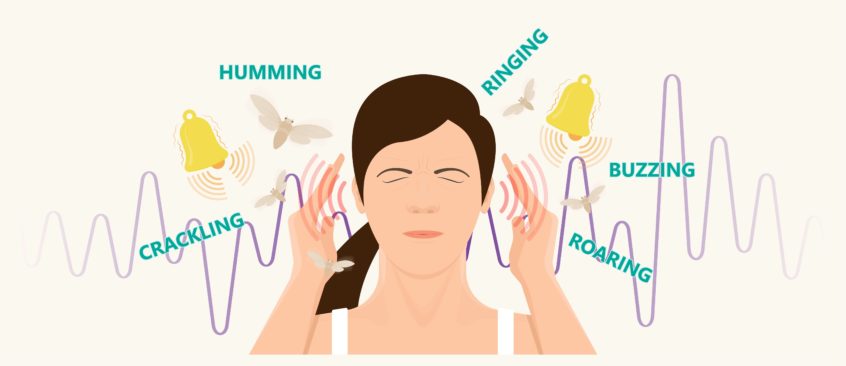It’s summer and if you’re hearing crickets but they’re not in your back yard, you might have tinnitus.
Tinnitus is the perception of sound when no external sound source is present. Tinnitus can take on any number of characteristics and is usually a sound that only you can hear. You can experience tinnitus that varies from soft to loud and from low to high pitched.
Individuals describe their tinnitus in a number of ways, including crickets, chirping, buzzing, clicking, ringing, white noise, and/or a roaring sound. Although these descriptions are typical, there are no specific rules about how tinnitus is perceived. Each person’s experience can be different.
According to the American Tinnitus Association (ATA), tinnitus is one of the most common health conditions in the United States, affecting approximately 45 million Americans to some degree. An estimated 20 million have symptoms severe enough that they seek medical attention, and approximately 2 million cannot function “normally” on a day-to-day basis.
Tinnitus develops in most people as a symptom of hearing loss. In fact, it’s commonly the first sign of hearing loss. It’s often caused by aging, health conditions like diabetes, long-term hearing damage or acute trauma to the individual’s hearing. Though it’s not known for sure, scientists believe hearing loss causes less external sound to reach the brain. In response, the brain changes how it processes different sound frequencies, and tinnitus is the result of these changes.
Though many people can ignore their tinnitus, others find it bothersome or disruptive to their lives. Sadly, some of these individuals become desperate for help, and may turn to over-the-counter remedies that claim to cure tinnitus.
Unfortunately, there is no cure for tinnitus, but its bothersome affects can be reduced by following a healthy lifestyle, getting plenty of rest, reducing stress and in some cases, wearing hearing aids. Hearing aids work to reduce tinnitus in a number of ways.
First, hearing aids can enhance the volume of external sound to the point that it covers or masks the sound of tinnitus. This makes it more difficult to consciously perceive tinnitus and helps the brain focus on outside, ambient noises. The masking impact of hearing aids is particularly strong for patients who have hearing loss in the same frequency range as their tinnitus.
Second, hearing aids also help increase the volume of external noise, increasing the amount of auditory stimulation received by the brain. There may be benefits to stimulating the brain’s auditory pathways with soft background sounds that might not otherwise be heard.
Patients who have loud tinnitus may find it difficult to take part in regular conversations or social activities because it’s so hard to follow a conversation, talk on the phone, watch television or listen to the radio.
Third, hearing aids help by supplementing the external volume of these activities above the perceived volume of tinnitus. As a result, patients may feel less personal frustration and social isolation.
Modern, open-fit digital hearing aids customized especially for the patient may be particularly useful for individuals with tinnitus. In addition, many newer hearing aids include supplemental sound masking functionality (white noise or other artificial ambient sound such as soothing chimes played directly into the ear) that further covers the perception of tinnitus.
If you have troublesome tinnitus, schedule an appointment with a doctoral-level audiologist. For more information on tinnitus, download our free e-book.



